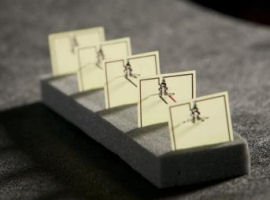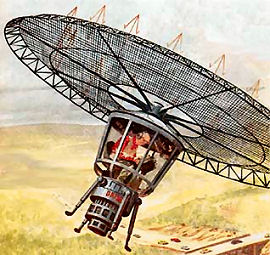
Using inexpensive materials configured and tuned to capture ambient signals from the electromagnetic spectrum, Duke University researchers have designed a power-harvesting device with efficiency similar to that of modern solar panels.
In a demonstration, the device wirelessly converted microwave signals to direct current voltage capable of recharging a cell phone battery or other electronic device, according to a report in the journal Applied Physics Letters.
The researchers say the device operates on a similar principle to solar panels. But rather than converting light energy into electrical current, the device is tuned to harvest the energy from electrosmog, such as satellite signals, cell phone emissions, radio and TV broadcasts, microwave, or Wi-Fi signals.
Researcher Allen Hawkes said the key to the electrosmog harvester lies in its application of metamaterials, engineered structures that can capture various forms of wave energy and convert them.
Several years ago, Georgia Tech scientists demonstrated electromagnetic wave harvesting devices that used nanoparticles printed on paper. The new Duke University metamaterial device represents a significant improvement in efficiency. The research team – Hawkes, Alexander Katko, and lead investigator Steven Cummer – used a series of five fiberglass and copper energy conductors wired together on a circuit board to convert microwaves into 7.3 volts of electrical energy.
“The properties of metamaterials allow for design flexibility not possible with ordinary devices like antennas,” explained Katko. “When traditional antennas are close to each other in space they talk to each other and interfere with each other’s operation. The design process used to create our metamaterial array takes these effects into account, allowing the cells to work together.”
The team had been getting energy efficiency around 10 percent, but with the new design (pictured) they were able to dramatically improve energy conversion to 37 percent.
“It’s possible to use this design for a lot of different frequencies and types of energy, including vibration and sound energy harvesting,” Katko said. “Until now, a lot of work with metamaterials has been theoretical. We are showing that with a little work, these materials can be useful for consumer applications.”
With additional modifications, the researchers said the power-harvesting metamaterial could potentially be built into a cell phone, allowing the phone to recharge wirelessly while not in use. This feature could, in principle, allow people living in locations without ready access to a conventional power outlet to harvest energy from a nearby cell phone tower instead.
“Our work demonstrates a simple and inexpensive approach to electromagnetic power harvesting,” said Cummer. “The beauty of the design is that the basic building blocks are self-contained and additive. One can simply assemble more blocks to increase the scavenged power.”
Related:
Discuss this article in our forum
No power source needed for new wireless communications technique
Pop music boosts solar cell efficiency
Scientists revisit Tesla’s electricity-from-air ideas
Biologically inspired, ultra-broadband chip could enable “cognitive” radio









Comments are closed.